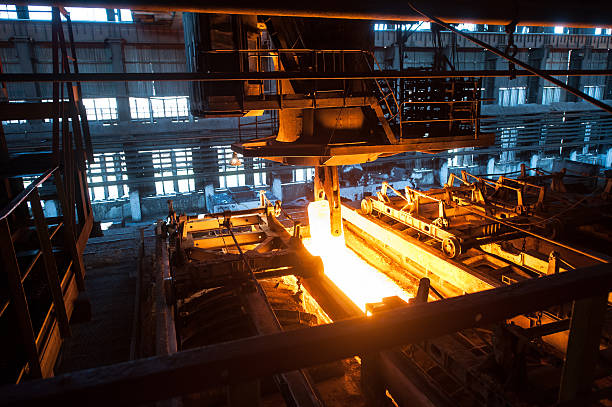Application and Development of 422 Stainless Steel
December 29,2022

Due to supercritical (initial steam pressure of 24MPa, initial steam temperature and reheating temperature of 566°C/566°C) and ultra-supercritical (initial steam pressure of 25MPa, initial steam temperature and reheating temperature of 600°C/600°C) steam turbine The steam parameters of the unit are high, and most of the problems in the steam turbine are due to the failure of high-temperature working parts such as blades due to the harsh operating environment, especially the failure of the last-stage blades. Therefore, the materials used for steam turbine blades are required to have good high-temperature performance and be able to maintain stable operation under high-temperature and high-pressure conditions for a long time. 422-suh-616-b50a951-1-4935-x20crmowv12-1-b4b-steels-of-blade-for-steam-and-gas-turbine" target="_self" title="422 Stainless Steel">422 Stainless Steel
Because of its good comprehensive mechanical properties and high temperature stability, high creep strength, thermal fatigue strength, and good thermal corrosion performance, it is often used to manufacture high-temperature second-last-stage long blades for 600MW supercritical steam turbines.
422-suh-616-b50a951-1-4935-x20crmowv12-1-b4b-steels-of-blade-for-steam-and-gas-turbine" target="_self" title="422 Stainless Steel">422 Stainless Steel is a martensitic stainless steel smelted by adding appropriate amount of Ni, Mo, V, W and other alloying elements on the basis of 12% Cr-based stainless steel, and strictly controlling the content of C, S, N, P and other elements. It not only has the oxidation resistance and corrosion resistance of Cr12 type martensitic stainless steel, but also has the thermal strengthening, thermal stability and better comprehensive mechanical properties brought about by the dispersion of components. Compared with the blade stainless steel used earlier, it has improved C, The content of Ni, W, and Mo increases the strength of the material and improves the high temperature performance. The content of Cr element in 422 Stainless Steel is relatively high, which can increase the amount of ferrite and reduce the hardness and tensile strength of the alloy, and at the same time passivate the material and make it have good corrosion resistance; Ni element is added to 422 Stainless Steel It can not only improve the tempering stability of the material, but also improve the corrosion resistance of the alloy in reducing media. In addition, Ni is also a forming element of austenite. Adding an appropriate amount of Ni in the material can facilitate the austenitization of the alloy, expand the austenite stable zone, promote martensite transformation, and improve the comprehensive mechanical properties of 422 Stainless Steel; Mo The main purpose of adding 422 Stainless Steel is to improve the corrosion resistance of 422 Stainless Steel, enhance its tempering stability and secondary hardening effect, and improve hardenability. In addition, the Mo element can also delay or even prevent the precipitation of carbides after austenitization, improve the toughness and plasticity, and increase the strength without reducing the toughness; W is also a ferrite forming element, and its function is similar to that of Mo, which can stabilize stainless steel Corrosion resistance; Adding V element to heat-resistant stainless steel can make carbon and nitrogen form a stable compound, prevent stainless steel from creeping and oxidation, improve the strength and corrosion resistance of the alloy, and adjust the comprehensive mechanical properties of the material
.
As a new type of supercritical steam turbine blade steel, 422 Stainless Steel not only has good mechanical properties at room temperature, but also has special properties such as good high-temperature mechanical properties, creep resistance and thermal corrosion resistance. After proper heat treatment, the alloy has a good combination of high-temperature structure, strength and toughness, stable high-temperature mechanical properties, and can adapt to long-term work under high temperature and high pressure conditions, and is suitable as steel for steam turbine blades. In order to fully explore the potential of the steel's formability, it is necessary to systematically study the plastic rheological behavior, forming process, structure and properties of the steel